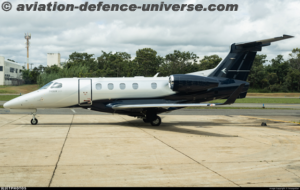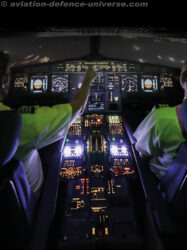- Uncrewed flight paves way to crew missions
White Sands, New Mexico. 31 May 2022. Boeing’s CST-100 Starliner spacecraft landed at the U.S. Army’s White Sands Missile Range in New Mexico at 5:49 p.m. Central Time. The safe return to Earth brings a close to the successful end-to-end uncrewed orbital flight test that was flown to demonstrate the quality and performance of the transportation system prior to crewed flights.
“We have had an excellent flight test of a complex system that we expected to learn from along the way and we have,” said Mark Nappi, vice president and program manager, Boeing Commercial Crew Program. “Thank you to the NASA and Boeing teammates who have put so much of themselves into Starliner.”
The flight test completed today began May 19 with a launch from Florida’s Cape Canaveral Space Force Station atop a United Launch Alliance Atlas V rocket. Capabilities the Starliner demonstrated included:
- End-to-end performance of the Atlas V rocket and Starliner spacecraft through launch, ascent, on-orbit, re-entry and landing;
- Starliner’s autonomous software and the on-orbit operation of its avionics system, docking system, communications/telemetry systems, environmental control systems, solar arrays, electrical power systems, and propulsion systems;
- Ability to hold docking attitude, receive commands from the space station crew, and command holds and retreats during final station approach;
- Battery charging, hatch open and close, establishing joint ventilation with the station, file transfer and cargo transfer.
When Starliner completes its next flight, Boeing will have fulfilled NASA’s goal of having two commercial vehicles to transport astronauts safely, reliably and sustainably to the station from American soil.
“With the completion of OFT-2, we will incorporate lessons learned and continue working to prepare for the crewed flight test and NASA certification,” Nappi added.

































































































































